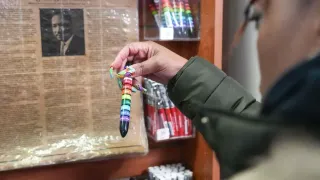November 14, 2016
HIV Testing Trends Among MSM and Hispanics/Latinos
Eric Brus READ TIME: 3 MIN.
Since 2006, the CDC has recommended that sexually active gay, bisexual, and other men who have sex with men (MSM) be tested for HIV at least annually. A variety of HIV testing initiatives and strategies have been implemented during the past decade to expand HIV testing among MSM and thereby increase early diagnosis and treatment and reduce transmission. To better understand HIV testing patterns among HIV-positive MSM prior to their diagnosis, CDC researchers recently analyzed data from CDC's National HIV Surveillance System (NHSS).
Their study, published last month in the Morbidity and Mortality Weekly Report (MMWR), focused on 21 jurisdictions conducting HIV incidence surveillance during the period from 2007 through 2013.
The researchers compared the number of newly diagnosed MSM who had a negative HIV test result in the 12 months before diagnosis for the two years at the beginning and end of the study period. Their analysis showed that the proportion of MSM who had a negative HIV test during the 12 months before diagnosis increased from 48 percent in 2007 to 56 percent in 2013, "indicating a trend toward increased HIV testing and earlier HIV diagnosis among persons most at risk for HIV," according to the researchers.
"Although testing facilitates early detection of HIV, given the large numbers of MSM still acquiring HIV (many after having a negative HIV test), enhanced HIV testing efforts might incorporate provision of biomedical prevention interventions such as pre-exposure prophylaxis for persons testing negative but still at risk for infection to reduce HIV acquisition."
HIV Testing and Outcomes Among Hispanics/Latinos
In another report published in the MMWR, CDC researchers evaluated HIV testing and outcomes among Hispanics/Latinos in the U.S., Puerto Rico, and the U.S. Virgin Islands. They analyzed data from the National HIV Prevention Program Monitoring and Evaluation system on more than 3 million CDC-funded HIV test events conducted during 2014.
Their analysis showed that 22.6 percent of CDC-funded HIV testing events and 23.3 percent of new HIV diagnoses were among Hispanics/Latinos. They also found that only about 60 percent of newly diagnosed Hispanics/Latinos were linked to medical care within 90 days of diagnosis -- well below the 85 percent linkage-to-care goal in the National HIV/AIDS Strategy. Newly diagnosed Hispanics/Latinos living in U.S. dependent areas and the Northeast had the highest rates of linkage to HIV medical care, referrals for partner services, and referrals for HIV risk-reduction services, while those living in the South had the lowest rates.
"The findings emphasize the need for culturally and linguistically sensitive prevention strategies to promote diagnosis of HIV infection and linkage to medical care among Hispanics/Latinos to improve health outcomes," according to the researchers. "Stakeholders and partners should focus on prevention and care strategies for Hispanic/Latino subpopulations (e.g., men who have sex with men and persons who inject drugs) to reduce HIV-related disparities."
Eric Brus is the Director of Health Information at AIDS Action Committee. This report is produced by the Health Library of the AIDS Action Committee in collaboration with the New England AIDS Education and Training Center Minority AIDS Initiative Project. The full version is available online.






